How to Fertilize Magnolia: Boost Growth with Expert Advice
- March 25, 2024
- 0 comment
Learn How to Fertilize Magnolias for vibrant growth. Essential tips on the right fertilizer, timing, and application for stunning blooms. Fertilizing magnolias is a delicate balance that requires understanding the specific needs of these majestic trees. With their large, fragrant blooms and glossy green leaves, magnolias are a stunning addition to any garden. However, to ensure they thrive and produce the spectacular flowers they’re known for, it’s crucial to provide them with the right nutrients at the right time.
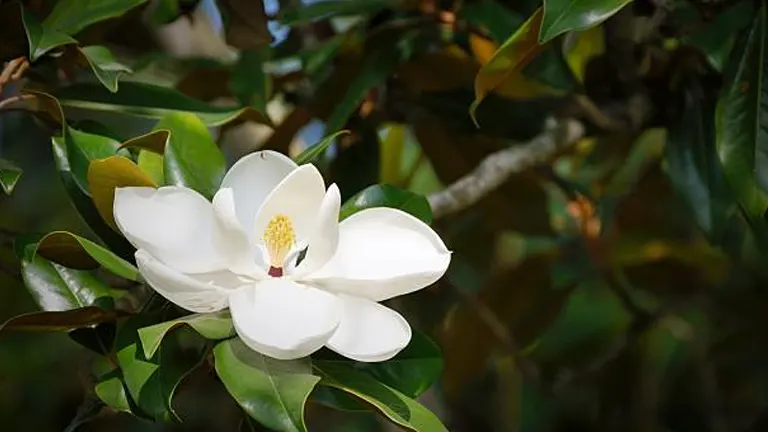
This guide will walk you through the essential steps of fertilizing magnolias, from selecting the appropriate fertilizer to the timing and application techniques that promote lush blooms and robust health. Whether you’re a seasoned gardener or a beginner, these insights will help you nurture your magnolias for optimal growth and beauty.
Table of Contents
- Understanding Magnolia Trees
- Pre-Fertilization Steps
- Fertilization Techniques for Magnolias
- Comprehensive Guide on How to Fertilize Magnolia Trees
- Planting and Spacing for Medium to High Density Magnolia Orchards
- Pruning Techniques for Magnolia Trees
- Post-Fertilization Care
- Common Mistakes to Avoid
- Conclusion
- FAQs
Understanding Magnolia Trees
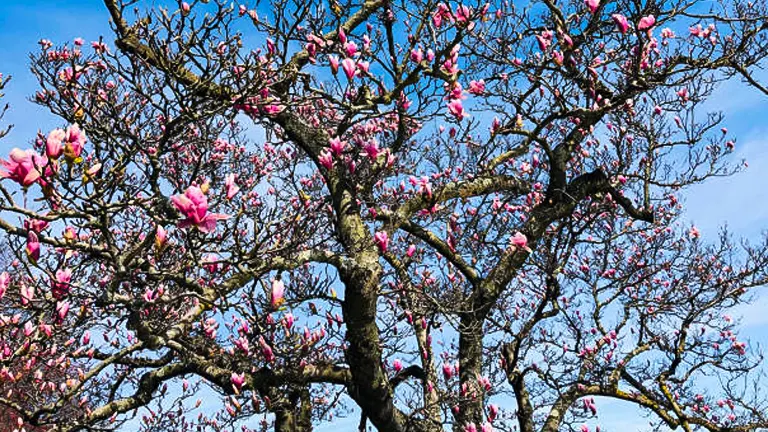
Magnolias are diverse, with over 200 species ranging from towering trees to shrubby plants, each with its unique charm and requirements. Popular species like the Southern magnolia (Magnolia grandiflora) and the star magnolia (Magnolia stellata) differ in their growth habits and environmental needs. To cultivate healthy magnolias, gardeners must first understand these needs, particularly the climate and soil conditions conducive to their growth. Magnolias flourish in well-drained, slightly acidic to neutral soil, thriving under full sun to partial shade.
Soil Acidity and Nutrient Absorption
Magnolias exhibit a preference for well-drained soils with a slight acidity, typically thriving in soil pH levels ranging from 5.5 to 6.5. This pH range optimizes the availability of essential nutrients such as iron, manganese, and zinc, which are critical for chlorophyll production and overall plant health. In more alkaline conditions, these nutrients become less available, leading to chlorosis and impaired growth.
Light Requirements and Photosynthesis Efficiency
While magnolias are adaptable to a range of light conditions, from full sun to partial shade, their photosynthetic efficiency peaks in environments that provide ample but indirect light. Full sun exposure promotes the highest rate of photosynthesis, enhancing the tree’s ability to synthesize food for growth and bloom production. However, young magnolias and certain species like the star magnolia may benefit from partial shade, which protects them from excessive heat stress and conserves moisture.
Water and Nutrient Transport: The Role of Xylem
The xylem tissue in magnolias plays a crucial role in water and nutrient transport from the roots to the leaves. This process is vital for sustaining photosynthesis and transpiration rates, especially in taller species. The efficiency of this system influences the tree’s resilience to environmental stressors and its overall growth rate.
Comparative Analysis of Popular Magnolia Species
| Characteristic | Southern Magnolia (M. grandiflora) | Star Magnolia (M. stellata) |
|---|---|---|
| Average Height | 60-80 feet (18-24 meters) | 15-20 feet (4.5-6 meters) |
| Soil pH Preference | 5.5-6.5 (slightly acidic) | 5.5-6.5 (slightly acidic) |
| Optimal NPK Ratio | 8-8-8 or 10-10-10 (balanced for growth & bloom production) | 8-8-8 or 10-10-10 (balanced, with emphasis on bloom nutrition) |
| Key Nutrients Required | Nitrogen (N), Phosphorus (P), Potassium (K), Magnesium (Mg), Iron (Fe) | Nitrogen (N), Phosphorus (P), Potassium (K), Magnesium (Mg), Iron (Fe) |
| Nutrient Absorption Insights | High nitrogen promotes leaf growth; phosphorus supports root development and bloom production; potassium enhances overall health and disease resistance. Magnesium and iron are critical for chlorophyll production and preventing chlorosis. | Similar nutrient needs as M. grandiflora, but may require more iron supplementation in alkaline soils to prevent chlorosis. |
| Bloom Characteristics | Large, fragrant, white flowers, up to 12 inches across | Smaller, fragrant, white to pink flowers, 3-4 inches in diameter |
| Growth Rate | Moderate | Slow to moderate |
| Fertilization Frequency | Once in early spring and optionally a light application in mid-summer for younger trees | Primarily in early spring, with attention to soil moisture and pH levels to enhance nutrient uptake |
| Cold Hardiness Zones | 7-9 | 4-8 |
| Unique Adaptations | Thick, waxy leaves reduce water loss, making them more drought-resistant. Large petals and sepals evolved to attract beetle pollinators. | Compact size and early blooming adapted to cooler climates. Resilient to late spring frosts due to bud hardiness. |
Scientific Insights
- Soil Microbiome’s Role: The soil microbiome plays a crucial role in nutrient absorption and availability for magnolias. Incorporating organic matter into the soil can enhance microbial diversity, improving nutrient breakdown and soil structure. This is particularly beneficial for magnolia trees, aiding in the efficient uptake of the essential nutrients outlined.
- Mycorrhizal Associations: Magnolias benefit from symbiotic relationships with mycorrhizal fungi, which colonize the plant’s root system and assist in water and nutrient absorption. Supplementing soil with mycorrhizal inoculants can improve nutrient uptake efficiency, especially for phosphorus, and enhance drought resistance.
Pre-Fertilization Steps
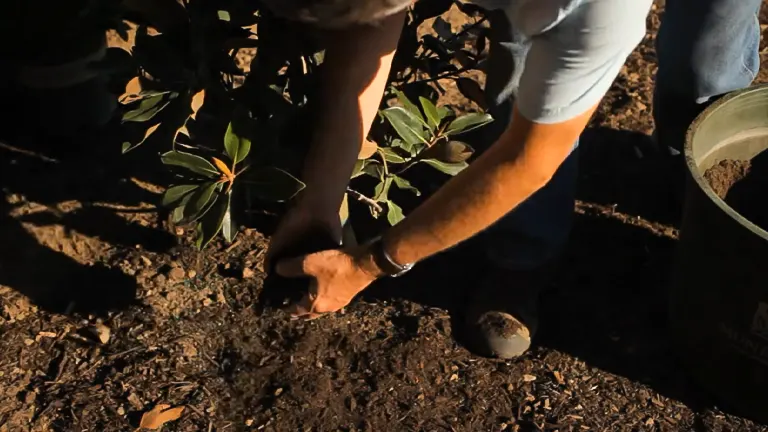
Soil Testing: Before introducing any fertilizers, it’s crucial to test the soil. This test reveals the soil’s pH and nutrient levels, guiding you to choose the appropriate fertilizer. Magnolias prefer a soil pH between 5.5 and 6.5. Adjusting the soil pH according to the test results can significantly impact your magnolia’s health and bloom.
Selecting the Right Fertilizer: The choice between organic and chemical fertilizers is pivotal. Organic fertilizers, such as compost or bone meal, release nutrients slowly and improve soil health over time, while chemical fertilizers offer a quick nutrient boost. A balanced 10-10-10 NPK (nitrogen, phosphorus, potassium) fertilizer often suits magnolias, providing the essential nutrients in equal proportions.
Fertilization Techniques for Magnolias
Optimal Fertilization Timing and Nutrient Uptake
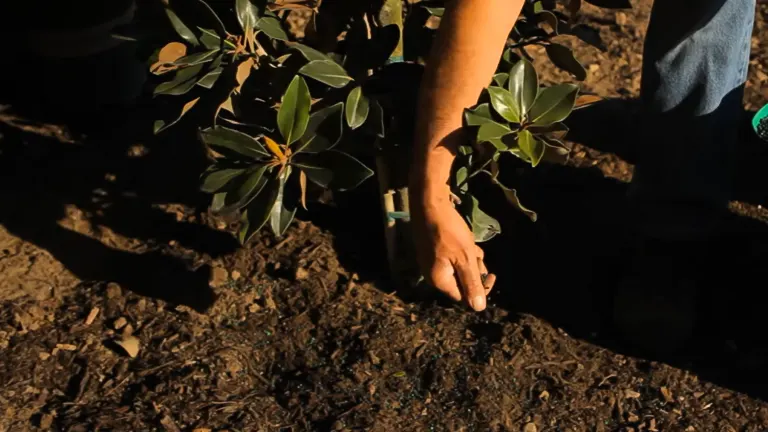
Fertilizing at the right time is crucial for matching the nutrient uptake with the tree’s growth cycle. Late winter or early spring fertilization coincides with the root’s active absorption phase, preparing the tree for the energy demands of new growth. During this period, the tree’s carbohydrate reserves are mobilized to support bud break and leaf expansion, making nutrient availability key to vigorous growth and health.
For magnolias, a second lighter fertilization in mid-summer can support continued growth and prepare the tree for the next season, but it’s important to adjust this based on rainfall, temperature, and soil conditions to prevent nutrient runoff or stress to the tree.
Precision in Application: Maximizing Effectiveness
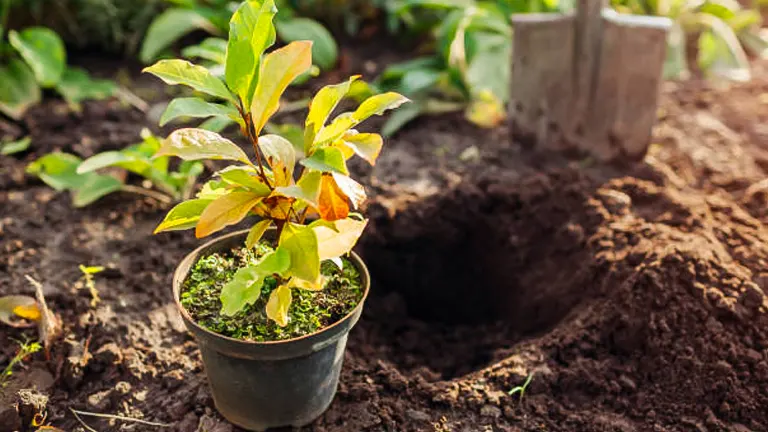
Methodological Application Insights: Applying fertilizer effectively is not just about the ‘how’ but also the ‘where’ and ‘how much’. A methodical approach ensures that nutrients are accessible to the magnolia’s extensive root system without causing harm.
- Localized Fertilization Strategy: Understanding the architecture of magnolia roots, which can extend 2-3 times the canopy width, guides effective nutrient placement. Fertilizer should be evenly distributed from just beyond the trunk to the outer limits of the root zone, avoiding concentration in any single area to prevent root burn and ensure even growth.
- Incorporation and Watering Techniques: Surface application followed by light incorporation into the soil and thorough watering facilitates nutrient penetration and reduces volatilization losses. This method helps in maintaining soil moisture balance, which is critical for nutrient solubilization and root absorption.
Nutrient Requirements and Fertilization Guidelines
To provide a detailed perspective, below is a table outlining specific nutrient needs for magnolias, highlighting the importance of each nutrient and recommended fertilization rates based on scientific guidelines:
| Nutrient | Role in Plant Health | Optimal Concentration in Soil | Application Rate (lbs/1000 sq ft) |
|---|---|---|---|
| Nitrogen (N) | Promotes leaf growth and greenery | 20-30 ppm | 1-2 |
| Phosphorus (P) | Supports root development & blooms | 10-20 ppm | 0.5-1 |
| Potassium (K) | Enhances overall health & disease resistance | 20-30 ppm | 1-2 |
| Magnesium (Mg) | Critical for chlorophyll production & enzyme activation | 10-15 ppm | 0.2-0.5 |
| Iron (Fe) | Prevents chlorosis, crucial for energy transfer | 5-10 ppm | 0.1-0.3 (chelated forms preferred) |
Enhancing Nutrient Absorption: The Role of Soil pH
Maintaining soil pH within the slightly acidic range (5.5 to 6.5) is paramount for optimal nutrient availability and uptake. At this pH, essential nutrients remain soluble and accessible to the tree. Regular soil testing can guide the application of lime or sulfur to adjust pH and optimize the soil environment for magnolia health.
Comprehensive Guide on How to Fertilize Magnolia Trees
Step 1: Timing Your Fertilization
- The optimal time for fertilizing magnolias is in late winter or early spring, just before the onset of the new growth phase. This ensures that the nutrients are readily available as the tree begins to grow. For young or newly planted magnolias, consider a second, lighter application in mid-summer to support their development.
Step 2: Choosing the Right Fertilizer
- A balanced 8-8-8 or 10-10-10 NPK (nitrogen, phosphorus, potassium) granular fertilizer is suitable for most magnolias. Alternatively, organic options such as compost, bone meal for phosphorus, and potassium sulfate can be used to match the specific needs of your tree.
- Conduct a soil test to determine the pH and nutrient levels. Magnolias thrive in slightly acidic soil (pH 5.5-6.5). Adjust your fertilizer choice based on soil test recommendations to address any deficiencies.
Step 3: Calculating the Amount of Fertilizer
- Follow the label instructions on the fertilizer package for the recommended amount. As a general rule, use about 1 pound of granular fertilizer for every inch of trunk diameter measured at knee height. For liquid fertilizers, follow the dilution rates provided on the label.
Step 4: Preparing the Area
- A day before applying fertilizer, water the area around your magnolia thoroughly. This pre-moistening helps the soil absorb the fertilizer more evenly and reduces the risk of root burn.
Step 5: Applying the Fertilizer
- Starting a few inches away from the trunk, apply the granular fertilizer evenly out to the drip line (the area directly below the outer circumference of the tree branches). For young trees, the fertilizer should be spread over the entire root zone.
- If using liquid fertilizer, apply it over the same area, ensuring even coverage of the root zone.
- Lightly mix the granular fertilizer into the top 1-2 inches of soil with a rake to help the nutrients penetrate the root zone. Be careful not to damage shallow roots.
Step 6: Watering After Application
- After applying fertilizer, water the area around the tree again. This helps distribute the fertilizer deeper into the soil and ensures that nutrients are available to the roots, while also preventing fertilizer burn.
Step 7: Mulching
- After fertilizing and watering, apply a 2-3 inch layer of organic mulch around the base of the tree, extending out to the drip line. Keep the mulch a few inches away from the trunk to avoid moisture buildup and potential rot. Mulch helps retain soil moisture, regulate temperature, and reduce weed competition.
Step 8: Monitoring and Adjusting
- In the weeks following fertilization, monitor your magnolia for signs of improved health and vigor, such as new growth and greener leaves. Be on the lookout for symptoms of over-fertilization, such as leaf burn or wilting.
- If you notice any adverse reactions or if a subsequent soil test shows nutrient imbalances, adjust your fertilization approach accordingly. Remember, less is often more when it comes to fertilizing.
Planting and Spacing for Medium to High Density Magnolia Orchards

Creating a magnolia orchard or a dense planting requires careful planning, especially in terms of spacing. The right plant-to-plant and row-to-row distances are critical for ensuring each magnolia has enough space to grow without competing for resources.
- Medium Density Planting: For a medium density orchard, aim for spacing that allows each tree enough room to reach its mature width. Generally, this means setting magnolias about 20 to 25 feet apart. Row spacing should also account for easy access for maintenance, so keeping rows 20 to 25 feet apart is advisable.
- High Density Planting: In high-density settings, where the goal is to maximize space without sacrificing tree health, reduce the spacing to about 15 to 20 feet between trees and rows. This closer planting necessitates vigilant pruning and care to prevent overcrowding and ensure adequate light and air circulation.
- Layout Planning: The layout should consider the mature size of the magnolias, ensuring each tree has enough room to grow both upwards and outwards. Incorporating an irregular or staggered planting pattern can also enhance light exposure and air flow among the trees.
Pruning Techniques for Magnolia Trees

Pruning is not just about maintaining a tree’s shape and size; it’s about encouraging healthy growth and bloom production.
- Why Pruning is Essential: Regular pruning helps to remove dead or diseased wood, encourages air circulation, reduces pest infestations, and stimulates the growth of new, healthy branches. For magnolias, pruning also helps to maintain a balance between the root system and the canopy, especially important for young trees or densely planted orchards.
- Pruning Methods: The best approach to pruning magnolias involves selective thinning of the branches to maintain the tree’s natural shape. Start by removing any dead, damaged, or crossing branches. Thin out dense areas to allow light to penetrate and air to circulate, reducing the risk of disease.
- Seasonal Pruning: The ideal time for pruning magnolias is soon after they bloom in spring or early summer. Pruning at this time allows the tree to heal quickly without sacrificing the next season’s blooms. Avoid heavy pruning in late summer or fall, as this can stimulate new growth that might not harden off before winter.
Post-Fertilization Care
After fertilizing, providing the right care ensures that your magnolia trees can fully utilize the added nutrients for growth and blooming.
- Watering: Proper hydration is essential, especially in the weeks following fertilization. Water deeply once a week to help dissolve the fertilizer and carry its nutrients down to the roots. Avoid shallow watering, which can encourage surface roots and weaken the tree.
- Mulching: Applying a 2 to 3-inch layer of organic mulch around the base of the tree (but not touching the trunk) can help retain soil moisture, regulate soil temperature, and reduce weed competition. Mulch also gradually breaks down, adding organic matter back into the soil.
By following these guidelines for planting, spacing, pruning, and post-fertilization care, you provide your magnolia trees with the foundation they need for vigorous growth and breathtaking blooms.
Common Mistakes to Avoid
In the quest for lush, healthy magnolia trees, it’s easy to fall into common pitfalls. Here are some mistakes to avoid:
- Over-Fertilization: More isn’t always better. Excessive fertilizer can harm magnolias, leading to salt build-up in the soil, nutrient burn, and inhibited water uptake. Stick to recommended amounts and schedules.
- Ignoring Soil pH: Magnolias thrive in slightly acidic to neutral soil. Applying fertilizer without correcting a pH imbalance can limit nutrient absorption.
- Improper Pruning: Over-pruning or pruning at the wrong time can stress the trees, reduce bloom, and open pathways for disease. Prune sparingly and at the right time.
- Neglecting Young Trees: Young magnolias have different needs from mature ones. They require more frequent watering and fertilization in their early years to establish strong roots and healthy growth.
- Watering Mistakes: Both overwatering and underwatering can stress magnolia trees, especially after fertilization. Ensure a consistent watering schedule that matches the tree’s needs and local weather conditions.
Conclusion
Fertilizing magnolia trees is an art that balances science with a touch of care. By understanding the specific needs of your magnolia, choosing the right fertilizer, and applying it thoughtfully, you can encourage vibrant growth and spectacular blooms. Remember to consider the tree’s age, the soil condition, and the local climate in your fertilization plan. Avoid common pitfalls through careful observation and adjustment of your care routine.
Magnolias are more than just trees; they are living sculptures that grace our gardens with their timeless beauty. With the right approach to fertilization and care, your magnolia trees can thrive, bringing joy and serenity to your landscape for many years to come.
FAQs
- What’s the best time of day to fertilize my magnolia tree?
Fertilizing in the early morning or late afternoon is ideal. These times avoid the peak heat of the day, reducing evaporation and increasing nutrient absorption. - Can changing the type of fertilizer I use impact my magnolia’s bloom quality?
Yes, the fertilizer type can significantly affect bloom quality. A balanced fertilizer promotes overall health, but for enhanced blooms, look for one with a higher phosphorus content. - How deep should I apply the fertilizer around my magnolia tree?
Fertilizer should be applied on the soil’s surface, extending out to the drip line. There’s no need to dig it in, as watering will help the nutrients penetrate the soil. - Is it possible to fertilize a magnolia tree too much? What are the signs?
Over-fertilization is a common mistake. Signs include yellowing leaves, stunted growth, and leaf drop. If you notice these, reduce the frequency and amount of fertilizer. - Do newly planted magnolia trees require immediate fertilization?
New magnolia trees benefit from settling in before being fertilized. Wait until their second growing season to start fertilization to avoid overwhelming them. - How can I ensure the fertilizer is evenly distributed around my magnolia?
For even distribution, sprinkle the fertilizer starting a few inches from the base extending to the drip line, then water thoroughly to disperse the nutrients. - Can I use coffee grounds as a fertilizer for my magnolia tree?
Coffee grounds can acidify the soil and provide organic matter, making them suitable for magnolias in moderation. However, they should complement, not replace, a balanced fertilizer program. - After fertilizing, when should I expect to see improvement in my magnolia tree?
Improvement signs, such as greener leaves and new growth, can typically be seen within a few weeks to a month after fertilization, depending on the tree’s condition and the season.
In nourishing your magnolia tree with the right fertilizer at the correct time, you’re setting the stage for vibrant growth and spectacular blooms. Remember, a little care and attention can go a long way in ensuring the health and beauty of your magnolia. With the expert advice outlined, you’re now well-equipped to boost your magnolia’s growth and enjoy its timeless elegance in your garden. Happy gardening!
For more expert gardening advice, explore our guides, discover top recommendations in our best section, and delve into in-depth product reviews in our review section.

Benjamin Brooks
Forestry AuthorGreetings! I'm Benjamin Brooks, and my journey over the past 15 years has revolved around the fascinating realms of content creation, expertise in snow clearing, and the intricate world of lumberjacking and landscaping. What began as a simple curiosity about the natural world and heavy machinery has evolved into a passionate profession where my love for crafting words intertwines seamlessly with my lumberjacking and garden skills.











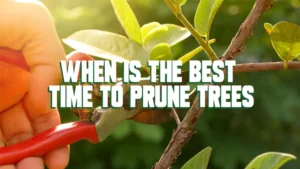

Leave your comment